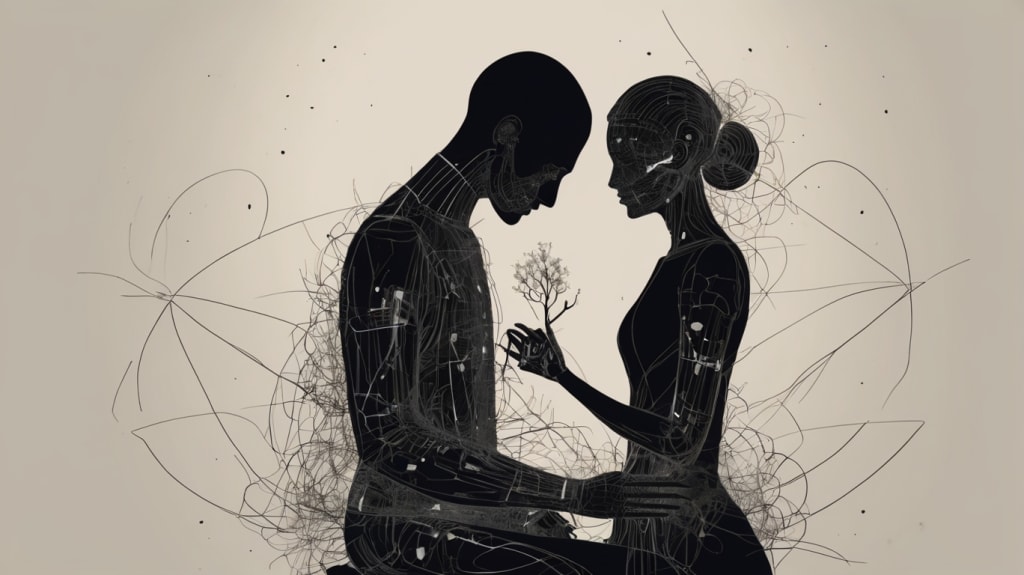AI Immortality: How Deathbots are Revolutionizing the Grieving Process?
Exploring the Ethical Implications and Emotional Impact of AI-Powered Conversations with the Deceased

A recent paper in Topoi by Dr. Regina Fabry and Associate Professor Mark Alfano from Macquarie University's Department of Philosophy delves into the profound impact of "deathbots" on grief experiences and the accompanying ethical dilemmas.
Understanding Deathbots
Deathbots are AI-driven chatbots designed to mimic the conversational style, vocabulary, and content of a deceased individual. Utilizing generative AI systems, these bots draw from a wide array of human-generated data such as text messages, voice recordings, emails, and social media interactions to simulate the speech or writing of the departed. The technology behind deathbots relies on large datasets of digital communication from the deceased, allowing the AI to produce responses that closely resemble what the person might have said if they were still alive.
While text-based deathbots are the most prevalent, advancements are leading to more sophisticated models with verbal inputs and audio outputs. These deathbots utilize "digital remains" to generate responses that closely resemble what the deceased might have said in response to a given prompt. The aim is to provide a comforting illusion of continuity, allowing the bereaved to engage in conversations that can feel emotionally supportive, if not entirely real.
The Impact on Grieving
“Optimistically, deathbots can be seen as technological tools that shape and regulate the emotional experiences of grief,” explains Dr. Fabry. "Interacting with a deathbot may enable the bereaved to maintain 'habits of intimacy' such as conversations, emotional support, and shared time." The idea is that, by facilitating ongoing dialogue with a representation of the deceased, deathbots can help individuals process their grief in a manner that feels natural and supportive.
However, grief is a complex and varied experience. Dr. Fabry points out that “the way we grieve, the duration of our grief, and the resources and practices that best support us are influenced by numerous factors.” These factors include the nature of the death (whether sudden, prolonged, or violent), the quality of the relationship with the deceased, and the cultural norms surrounding grief. For example, sudden deaths may elicit a need for different kinds of emotional support compared to the loss of someone who was ill for a long time.
Moreover, the impact of deathbots on the grieving process largely depends on the attitudes of the bereaved towards these digital surrogates. Dr. Fabry emphasizes the need for further empirical research to understand whether individuals view their interactions with deathbots as meaningful or merely a temporary solace. Some people might find great comfort in these interactions, while others might find them unsettling or even macabre.
Ethical Challenges and Consent
One of the significant ethical issues surrounding deathbots is the question of consent. "Not everyone wishes to be immortalized as a deathbot after their death. Some might actively curate their digital legacy to create a deathbot, while others might oppose the idea entirely," notes Dr. Fabry. She emphasizes that honoring the wishes of the deceased is a moral obligation for both the bereaved and the tech companies providing deathbot services. This means that if someone explicitly states they do not want a deathbot created from their digital footprint, their wishes should be respected.
There is also concern about the potential over-reliance on deathbots, which could hinder the natural grieving process. Dr. Fabry warns against the possibility of replacing genuine human relationships with digitally mediated ones, leading to self-deception or even delusional attachments. If a person begins to rely too heavily on interactions with a deathbot, they might struggle to move forward and accept the reality of their loss.
To mitigate these risks, Dr. Fabry and her colleagues advocate for the introduction of "automated guardrails" to monitor excessive dependence on deathbots. These could include software features that track the frequency and nature of interactions, flagging instances where the user might be engaging too heavily with the deathbot. Additionally, they recommend that interactions with deathbots be supervised by grief counselors or therapists to ensure healthy grieving practices. Professional oversight can help ensure that the use of deathbots supports rather than complicates the grieving process.
Conclusion
As AI technology continues to advance, deathbots represent a fascinating yet controversial development in how we deal with loss and mourning. While they offer the possibility of ongoing connection with a representation of the deceased, they also raise critical ethical and psychological questions. Ensuring that the wishes of the deceased are respected and that the bereaved do not become overly reliant on these digital surrogates will be crucial as we navigate the evolving landscape of grief in the digital age.
About the Creator
Enjoyed the story? Support the Creator.
Subscribe for free to receive all their stories in your feed. You could also pledge your support or give them a one-off tip, letting them know you appreciate their work.





Comments
There are no comments for this story
Be the first to respond and start the conversation.